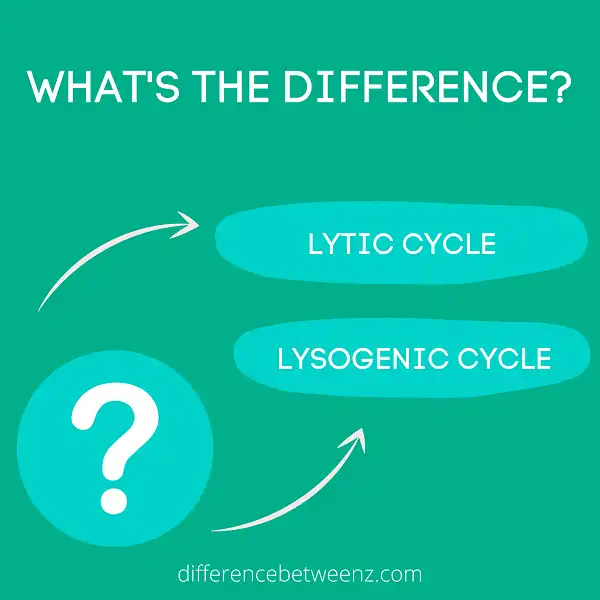Cycles are a fundamental part of life. Without them, organisms couldn’t survive. There are two types of cycles: lysogenic and lytic. While they have the same goal—to create new cells—they achieve it in different ways. In this blog post, we’ll take a closer look at these two cycle types and examine the difference between them. Stay tuned!
What is Lytic Cycle?
Lytic cycle is one of the two cycles of viral replication, lytic meaning “to break open”. In the lytic cycle, infection by a virus leads to the destruction of the host cell. The viral genome hijacks the host cell’s metabolic machinery to produce new virions, or virus particles. These virions are then released from the host cell to infect other cells. The Lytic cycle is contrasted with the lysogenic cycle, in which the viral genome integrates into the host cell’s DNA and is replicated along with the host cell’s own DNA. The Lytic cycle is often fatal to the host cell, while the lysogenic cycle can lead to a chronic infection. While both cycles can result in the production of new virions, only the Lytic cycle leads to the destruction of the host cell. Consequently, Lytic infections are typically more acute than lysogenic infections.
What is Lysogenic Cycle?
Lysogenic cycle is one of the two ways that viruses can produce progeny within a host cell(1). It involves the viral genome integration into the genome of the infected cell where it remains as a prophage. The key difference between Lysogenic cycle and lytic cycle is that lysogenic cycle leads to the synthesis of new virions only after induction whereas lytic cycle leads to the immediate synthesis of new virions. Lysogenic cycles may occur in bacteriophages and some plant viruses. One example of a bacteriophage known to use the lysogenic cycle is λ-phage, which can infect E. coli bacteria. After λ-phage attaches and injects its nucleic acid into the bacteria, λ-phage DNA circularizes and integrates into bacterial chromosome where it can remain dormant for long periods until it is induced by certain stimuli such as UV light (2). During this time, λ-phage is referred to as a prophage and can be passed on vertically to daughter cells during cell division.
Difference between Lytic and Lysogenic Cycle
Lytic and Lysogenic Cycle are two different mechanisms of viral infection. Lytic cycle leads to the immediate production of progeny virions whereas in lysogenic cycle, the viral genome becomes a part of the host cell’s genome and is replicated along with it. Lytic cycle results in the death of the host cell whereas lysogenic cycle does not. In lytic cycle, virions are assembled and released from the host cell whereas in lysogenic cycle, virions are not produced. Lytic infection is always accompanied by symptoms whereas lysogenic infection is asymptomatic. Lytic infection is an active process and requires energy from the host cell whereas lysogenic infection is a passive process and does not require any energy from the host cell. Lytic cycle is faster than lysogenic cycle. Lytic infection provides immunity to the host against similar viruses but lysogenic infection does not provide any immunity to the host. These are some of the major differences between Lytic and Lysogenic Cycle.
Conclusion
The lytic cycle is the process by which a virus reproduces itself by breaking down the cellular contents of its host. This can be destructive to the infected cell and often leads to apoptosis, or programmed cell death. The lysogenic cycle, on the other hand, is a more dormant state in which the viral DNA integrates into the host’s genome and remains inactive until it is activated at some later time. Which of these cycles your virus undergoes will depend on a variety of environmental factors as well as the particular virus itself. Now that you understand the basics of how viruses reproduce, let’s take a closer look at their genetic makeup.


